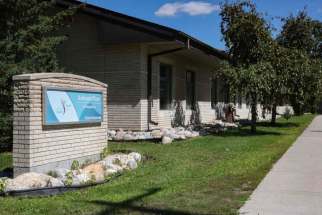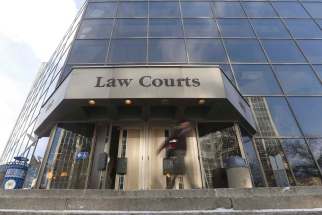Pandemic focus sidelines other concerns
Read this article for free:
or
Already have an account? Log in here »
To continue reading, please subscribe:
Monthly Digital Subscription
$0 for the first 4 weeks*
- Enjoy unlimited reading on winnipegfreepress.com
- Read the E-Edition, our digital replica newspaper
- Access News Break, our award-winning app
- Play interactive puzzles
*No charge for 4 weeks then price increases to the regular rate of $19.00 plus GST every four weeks. Offer available to new and qualified returning subscribers only. Cancel any time.
Monthly Digital Subscription
$4.75/week*
- Enjoy unlimited reading on winnipegfreepress.com
- Read the E-Edition, our digital replica newspaper
- Access News Break, our award-winning app
- Play interactive puzzles
*Billed as $19 plus GST every four weeks. Cancel any time.
To continue reading, please subscribe:
Add Free Press access to your Brandon Sun subscription for only an additional
$1 for the first 4 weeks*
*Your next subscription payment will increase by $1.00 and you will be charged $16.99 plus GST for four weeks. After four weeks, your payment will increase to $23.99 plus GST every four weeks.
Read unlimited articles for free today:
or
Already have an account? Log in here »
Hey there, time traveller!
This article was published 27/08/2020 (1933 days ago), so information in it may no longer be current.
On a moonless night in 1972, a jumbo jet slammed into the Florida Everglades because the flight crew was so preoccupied by a burned-out nose-wheel indicator light that no one noticed that the autopilot had been disengaged — and no one heard the low-altitude warning chime. In airplane cockpits, pilots are now warned against a stress-induced phenomenon known as “tunnel vision,” or focusing on one problem to the exclusion of other urgent concerns.
Winnipeg's tree canopies are a priceless gift from the past generations, and they're being taken from us at an alarming rate
Posted:
The trees that make up Winnipeg's beautiful, protective neighbourhood canopies are a priceless gift from past generations, and they're being taken from us at an alarming rate
That’s a dramatic example, but it’s easy to see how a city might develop “tunnel vision” during a pandemic. For months, all eyes have been on COVID-19 and how to keep Winnipeggers safe, while also making sure they have school and work to return to. Global pandemics, rightly, tend to become priority No. 1.
But as the growing number of orange dots on the mature trees that make up Winnipeg’s treasured tree canopy clearly illustrates, the novel coronavirus is not the only scourge plaguing our city.
Dutch elm disease, which first started suffocating our stately American elms in 1975, continues to be a problem; 2019 set a record for highest number of trees infected. Two more invasive pests, the Emerald ash borer and the cottony ash psyllid, will likely claim our stock of green ash trees over the next two decades.
The freak October snowstorm that damaged or felled our neighbourhoods’ oldest denizens forced the city to put its energy into cleanup instead of its fall planting program. Mayor Brian Bowman’s One Million Trees campaign, led by Trees Winnipeg — which, over the next two decades, would see Winnipeggers plant one million trees as our population reaches one million — was stymied by the pandemic. In order to reach this goal, 50,000 trees must be planted every year, to the tune of about $2 million per year.
But it’s a worthy goal, even amid a pandemic. In March, when we were told that “now is the time to stay home,” a renewed focus was placed on where we live, with people trying to make school and work happen from the kitchen table. But our city is also our home, and our trees do so much to make Winnipeg a great place to live: they improve our physical and mental health, they improve our air quality, they give us shade and protection.

During the pandemic, our tree-lined streets and lushly forested parks have provided much-needed refuge from cabin-fevered close quarters. The health and protection of our tree canopy must remain on our radar screen.
To that end, the rollout of Trees Winnipeg’s fall ReLeaf program — tree packages that will be available for Winnipeggers to plant on their residential and commercial properties — is one campaign that can help us contribute to a more diverse, and therefore more resilient, tree canopy. (More information about the program, including cost and pickup, can be found at treeswinnipeg.org/releaf-tree-planting-program).
An urban forest strategy is also being made for Winnipeg, with the city seeking public input beginning this fall. And hopefully, Winnipeggers will be keen to provide it. Tree-ravaging pests and other invasive species, such as zebra mussels in our lakes and waterways, may not seem like the most top-of-mind concerns in the era of COVID-19, but we must not let the pandemic — or pandemic fatigue — make us forget the other important battles being waged in our city.







